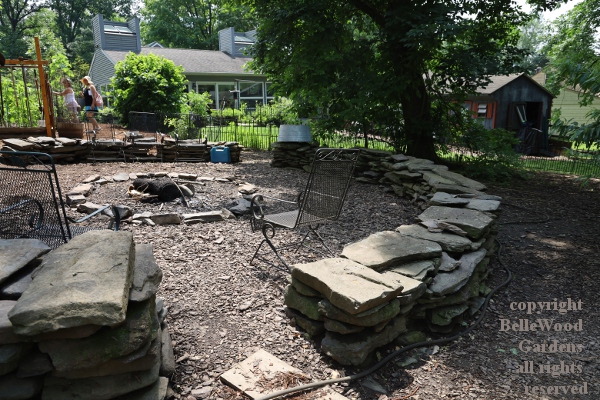
.
If you have any comments, observations, or questions about what you read here, remember you can always Contact Me
All content included on this site such as text, graphics and images is protected by U.S and international copyright law.
The compilation of all content on this site is the exclusive property of the site copyright holder.
Designed for Nature
Garden of Anna Eddling and Charlie Malinauskas, in Chalfont,
Saturday, 19 June 2021
Number 6 on the tour but our second stop is that of Anna Edling and Charlie Malinauskas in Chalfont. Her ancestry has deep roots in horticulture: her father, a plant physiologist and enthusiastic gardener, mother raised on a farm. Grandfather a landscape architect and nurseryman with an arboretum named after him. I got the sense that this is a rectangular property, much deeper front to back than it is side to side. There's a feeling of moving between rooms, gardens created at different periods. When we met her and had a brief conversation Anna said that she grows those she finds attractive and appealing, which happens to include both native and non-native plants.

Towards the front and at the side of a building is a sturdy colony of cup plant, Silphium perfoliatum. They will grow taller yet, as summer continues. A coarse, sunflower like plant from the great grasslands of the midwestern prairies, its common name refers to the look of the leaves, as though pierced by the stem. Rain collects and I've seen birds drinking the water, when I visited the prairie of the Shaw Nature Reserve in Gray Summit, Missouri.


Here is the largest vegetable garden, with tools neatly arranged and conveniently to hand.

A heavy duty compost tumbler, to turn yard debris into humus.

Continuing towards the back of the property there's a sizable fire pit. Now,
I understand why there is a fire extinguisher on a nearby tree. Further back
there's large coop and run with a good size flock of mixed breeds of chickens.

Working our way back towards the front of the property on the other side we pass a black metal fenced area with showy, fragrant Rubus odoratus. Flowers do attract butterflies, and birds eat the fruit, which is edible but rather dry and crumbly. (How do I know? It grows wild near where I live.) .

Vivid green, heart-shaped and bold, the leaves of pipe vine, Aristolochia tomentosa sprawl over a fence. A mature vine can reach 20 to 30 feet high, grown up a tree. And its leaves are the only food source for pipevine swallowtail butterfly larvae.

A different vine that's clearly been here for a while is strangling
a metal arbor and bench. Don't think anyone will be sitting here.

A lovely combination of prairie coneflower, Echinacea purpurea, with butterfly weed, Asclepias tuberosa. Lovely to look at, popular with bees and butterflies for nectar, and functional as larval host plant for monarch butterfly caterpillars.
That makes two, and there are yet more gardens to visit today.
Back to Top
Back to Designed for Nature
Back to June
Back to the main Diary Page